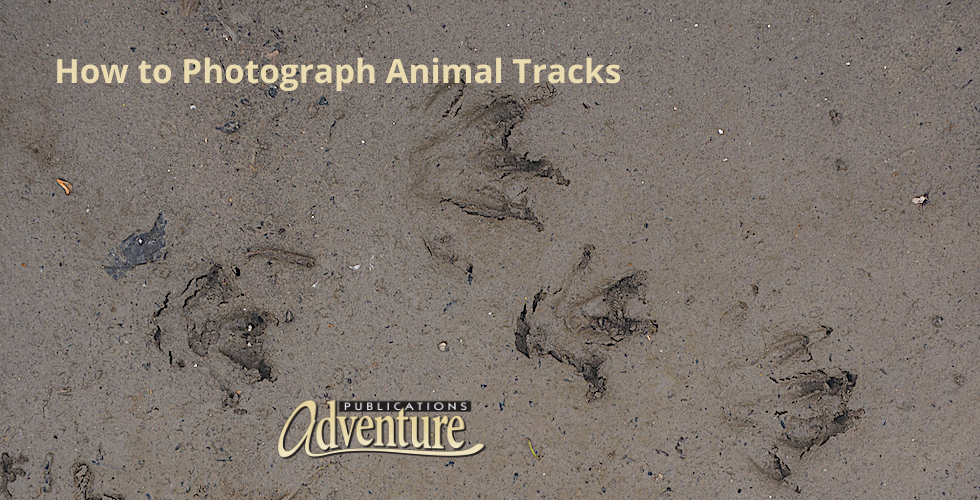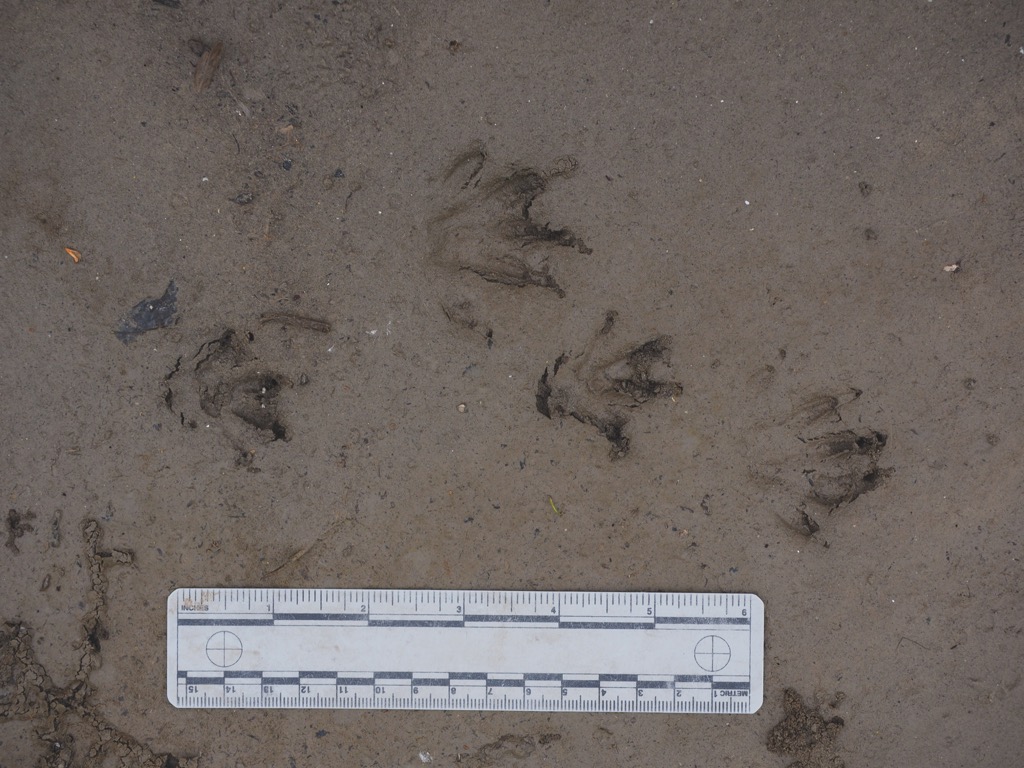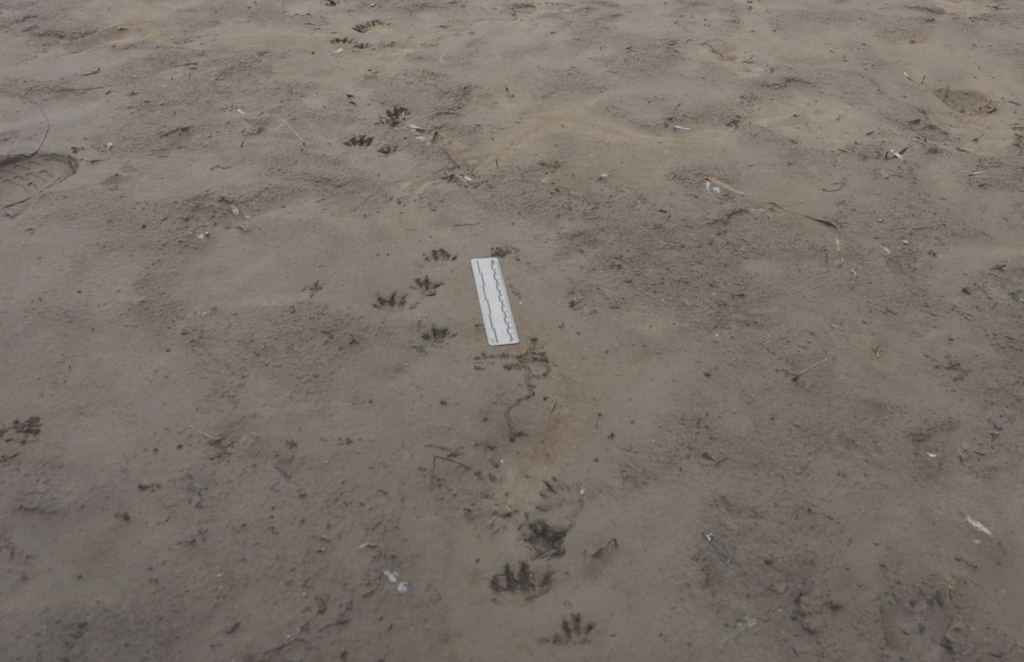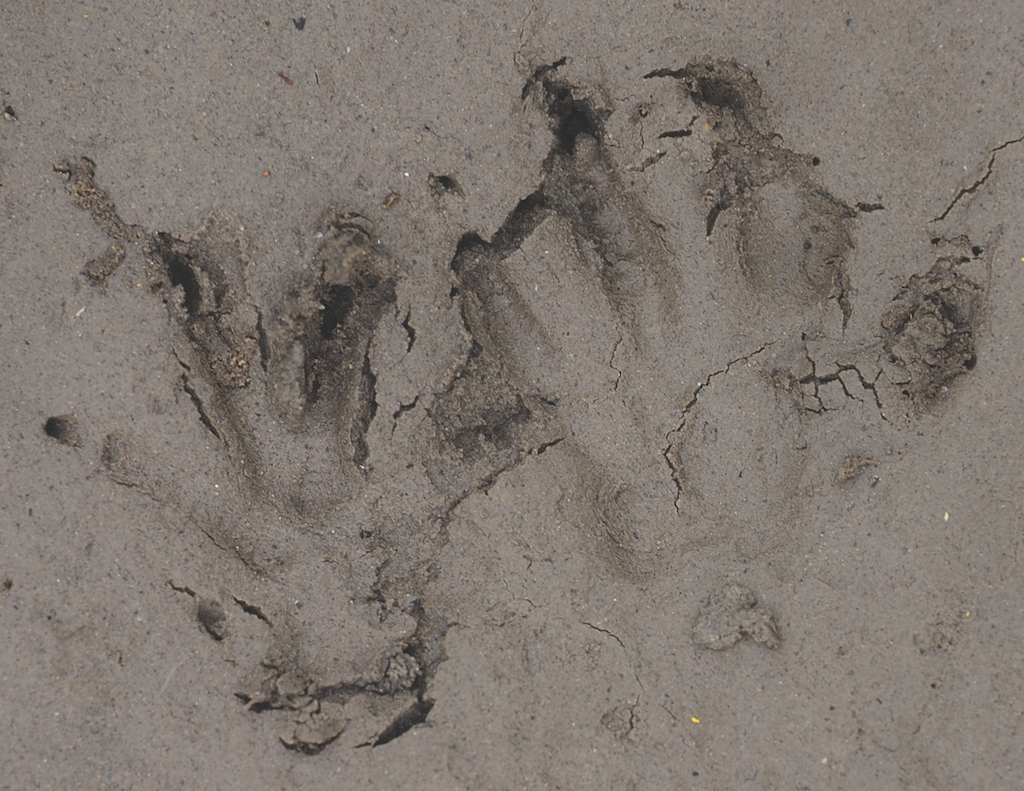
How to Photograph Animal Tracks
Jonathan Poppele, author of Animal Tracks of the Midwest, shares his tips on how to photograph animal tracks.
A good photographic record allows others to see and interpret what you observed, as if they were standing beside you in the field. When we interpret tracks, we use clues at multiple spatial scales—getting close, stepping back, and putting them in context. The best records have images and information at each of these scales, including multiple, clear, in-focus photographs of the following:

- Individual tracks (including a ruler for scale)
- Groups of tracks, showing the track pattern
- The surrounding habitat and the animal’s view of the landscape
- The exact location of the observation. Most smartphones can geotag photos. For rare or endangered species, you may not want to share an exact location online. In this case, a clear description of the habitat and biome may be best. iNaturalist allows users to obscure the coordinates of an observation.
- The date of the observation.
- Notes to help others interpret your photographs. These could include your own measurements of tracks or track patterns, along with local knowledge about species presence or behavior.

Tips on How to Photograph Animal Tracks
Include a scale: Whenever possible, include a ruler in your photos. Make sure the ruler is flat on the ground and the same distance from the camera as the track. If you don’t have a ruler, use a penny or other coin. Pocketknives, lighters, hands, and shoes come in many sizes and are of little use as scales.

Pay attention to lighting: Make sure the outline of the track is clearly visible. In bright or dappled sunlight, your photos will usually look better when the track is shaded. On an overcast day, it may help to sidelight the track—the flashlight on your friend’s phone should do the trick. Try different lighting conditions. You can delete the poor photos later once you see how things look on a full-size screen.
Take photos straight down: Even a slight angle can distort features and apparent size.
For more stories about wildlife and nature, sign up for our newsletter now!
About the pictures: Muskrat trail shows track patterns of less common, fast gaits. It began in a trot (stride 17 1⁄4″; trail width 3 1⁄4″), then shifted into a lope (stride 16 1⁄4″, trial width 4 1⁄4″, group length 6 3⁄4″). Observed at Fort Snelling State Park, Minneapolis–St. Paul metro area, on May 16, 2020. Uploaded to iNaturalist (observation 46264651).


